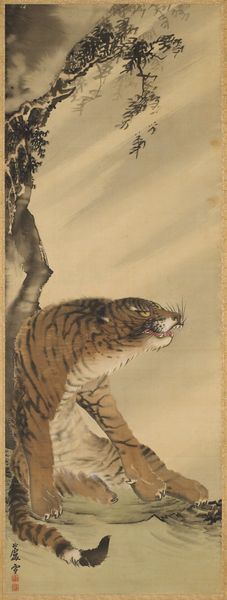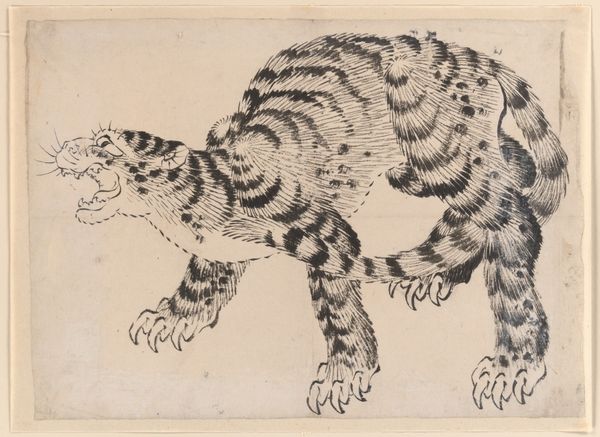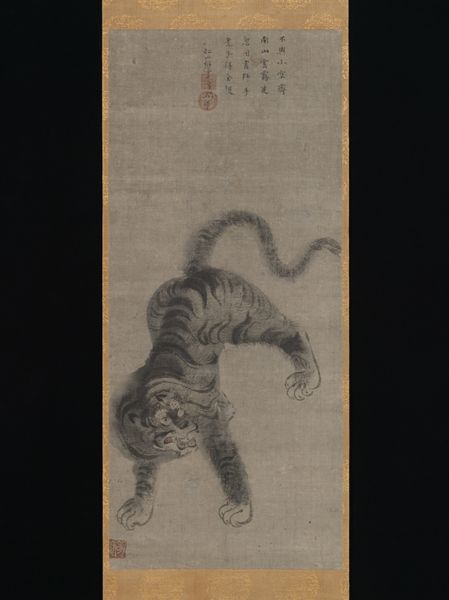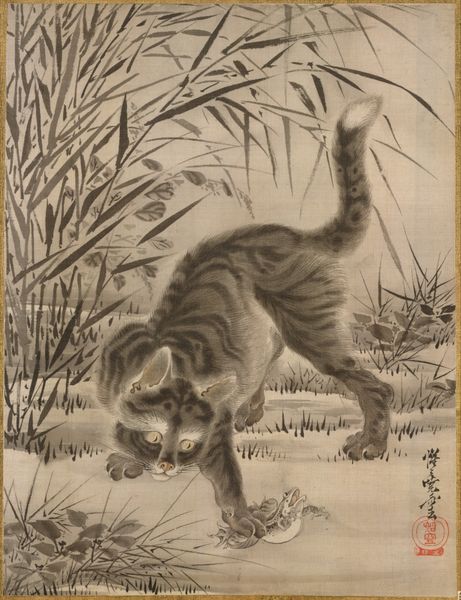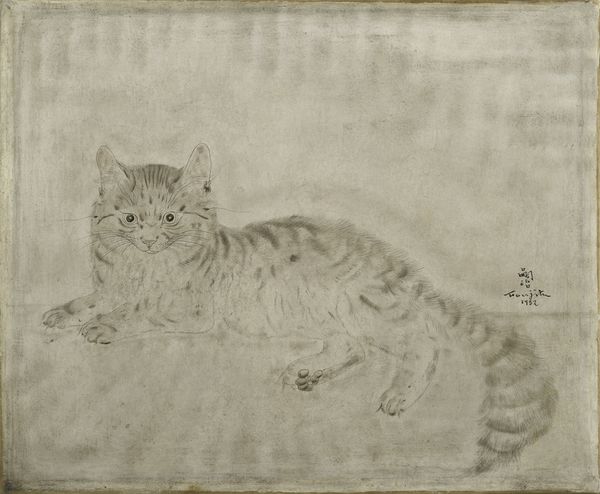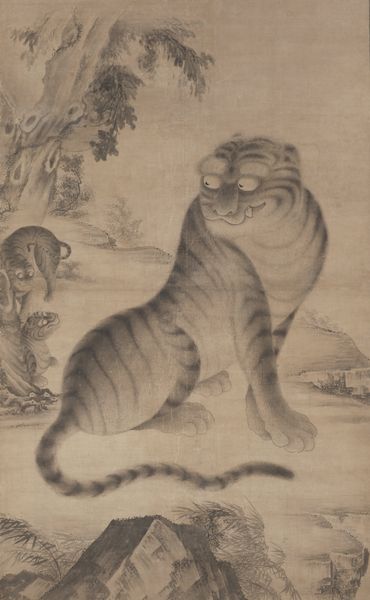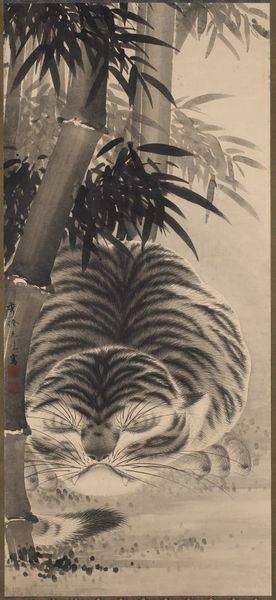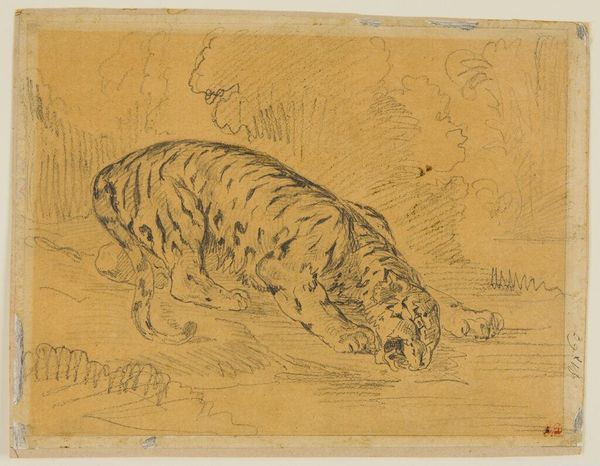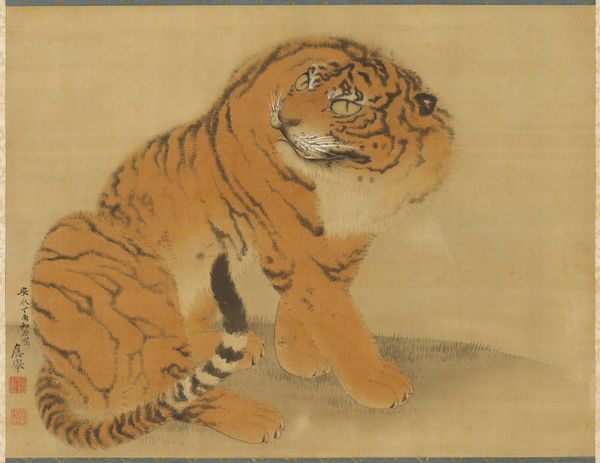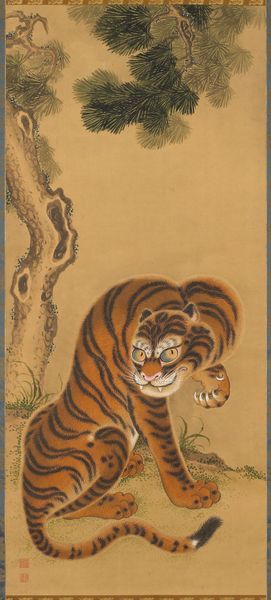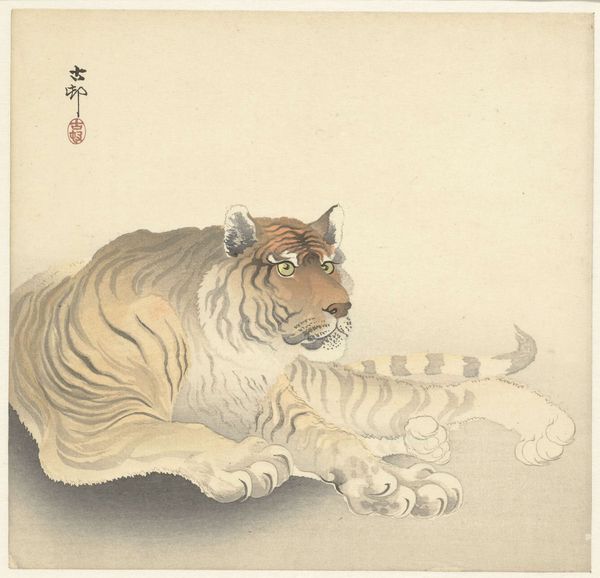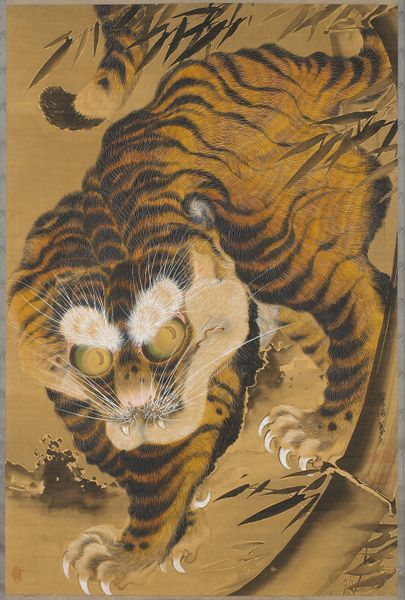
paper, ink-on-paper, hanging-scroll, ink
#
portrait
#
asian-art
#
figuration
#
paper
#
ink-on-paper
#
hanging-scroll
#
ink
#
watercolour illustration
#
realism
#
yamato-e
Dimensions: 40 x 18 3/8 in. (101.6 x 46.67 cm) (image)73 x 23 7/16 in. (185.42 x 59.53 cm) (overall, without roller)
Copyright: Public Domain
Curator: Looking at this hanging scroll, I am struck by the imposing size and weight conveyed, even in the delicate ink wash. Editor: Yes, it's quite striking! The Minneapolis Institute of Art holds this beautiful example of Japanese art. Attributed to Tawaraya Sōtatsu and dating from the 17th century, it's called "Tiger Licking Its Paw". What's your first impression? Curator: Its subdued palette certainly lends it an antique gravitas. Beyond the expert strokes of the brush, what captivates me are the symbolic interpretations of the tiger itself within Japanese culture. Tigers, often associated with strength and courage, served as potent emblems of leadership, especially military command. Editor: Interesting observation! And beyond leadership, the act of licking the paw. It's a gesture of self-care but in Eastern symbolism, such details often point to something deeper. Curator: Precisely. Self-care perhaps acts as a shield to defend or reflect inward power for strategy, as power politics require introspection. In Japan, images of tigers gained further political potency from their association with Zen Buddhism and warriors, making them vital figures of power. We have to remember how artworks participate in creating a shared iconography. Editor: It’s fascinating how that iconography crosses boundaries, the tiger as a protector and emblem of might seems universal. I note how carefully this one seems to be cleaning its claws. Not aggressive, almost contemplative, not the brutal predator one might expect. Curator: The artist masterfully captures the duality of the tiger myth, juxtaposing raw strength with an introspective stillness. Editor: Thinking of cultural memory, it’s a remarkable thing when you can feel both intimidation and vulnerability emanating from the same image across centuries. This little exercise offers such a rich way to examine political symbols within artwork! Curator: Absolutely, considering the public role of art and the forces that shaped them allow us to analyze works that endure far longer.
Comments
minneapolisinstituteofart about 2 years ago
⋮
The endearing pose of a tiger licking his paw was a standard theme among Chinese painters of the Southern Song dynasty (1127-1279). The Japanese painter Tawaraya Sōtatsu might have seen such a painting but instead of imitating the precise, descriptive brushwork of Chinese-style ink painters, he rendered this tiger in pale tonalities, applying the ink with a relatively large brush. Sōtatsu, son of a wealthy merchant, was a pioneer of the decorative Rinpa style and is today recognized as one of the most prominent artists of Japan. By the late 1620s, he was painting for the imperial court and was the first member of the merchant class that received the honorary Buddhist ecclesiastical title hokkyō (Bridge of the Law).
Join the conversation
Join millions of artists and users on Artera today and experience the ultimate creative platform.

